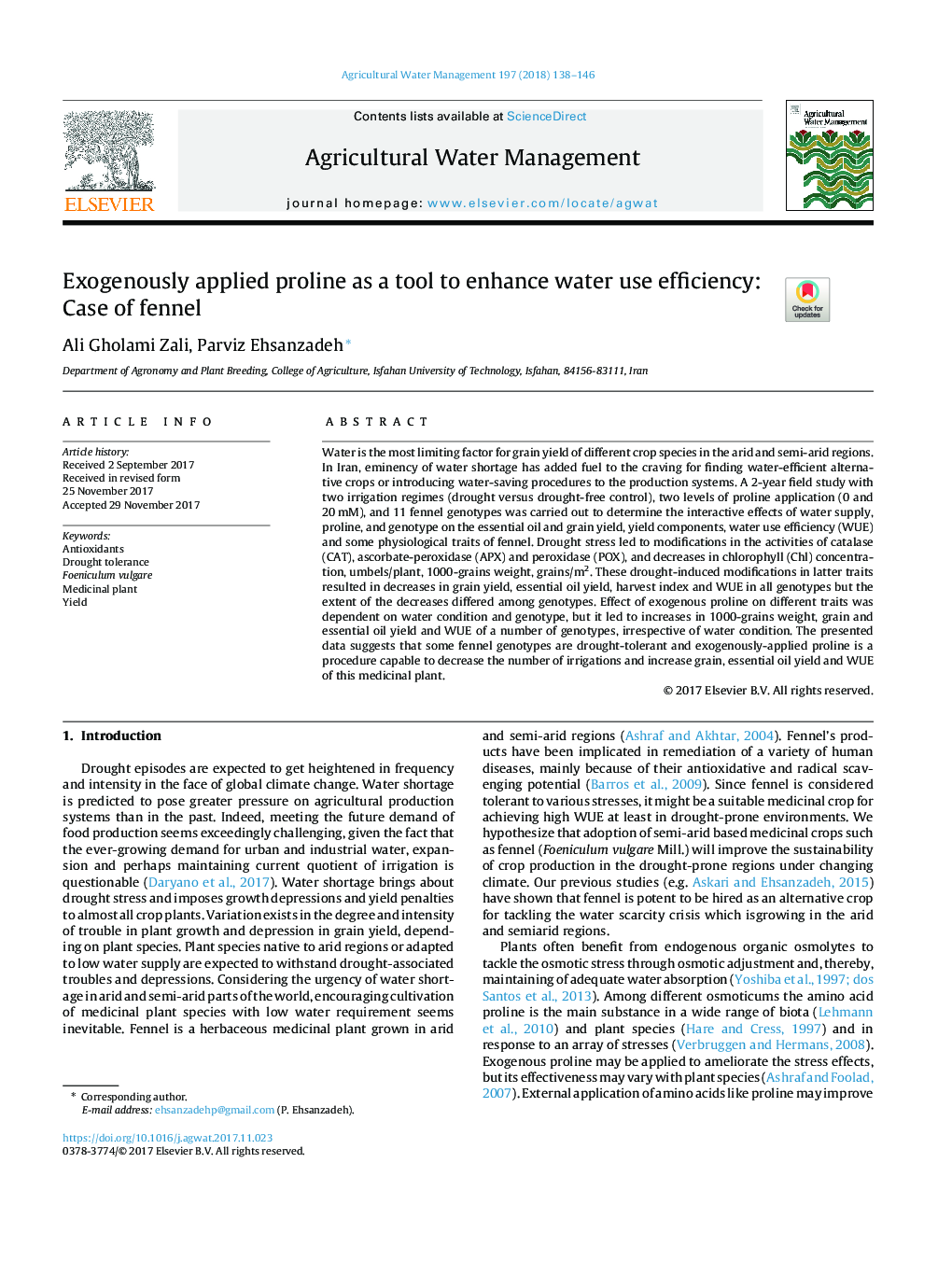| کد مقاله | کد نشریه | سال انتشار | مقاله انگلیسی | نسخه تمام متن |
|---|---|---|---|---|
| 8873174 | 1622883 | 2018 | 9 صفحه PDF | دانلود رایگان |
عنوان انگلیسی مقاله ISI
Exogenously applied proline as a tool to enhance water use efficiency: Case of fennel
ترجمه فارسی عنوان
پرولین به عنوان یک ابزار برای افزایش بهره وری استفاده از آب: پروتئین رازیانه
دانلود مقاله + سفارش ترجمه
دانلود مقاله ISI انگلیسی
رایگان برای ایرانیان
کلمات کلیدی
موضوعات مرتبط
علوم زیستی و بیوفناوری
علوم کشاورزی و بیولوژیک
علوم زراعت و اصلاح نباتات
چکیده انگلیسی
Water is the most limiting factor for grain yield of different crop species in the arid and semi-arid regions. In Iran, eminency of water shortage has added fuel to the craving for finding water-efficient alternative crops or introducing water-saving procedures to the production systems. A 2-year field study with two irrigation regimes (drought versus drought-free control), two levels of proline application (0 and 20Â mM), and 11 fennel genotypes was carried out to determine the interactive effects of water supply, proline, and genotype on the essential oil and grain yield, yield components, water use efficiency (WUE) and some physiological traits of fennel. Drought stress led to modifications in the activities of catalase (CAT), ascorbate-peroxidase (APX) and peroxidase (POX), and decreases in chlorophyll (Chl) concentration, umbels/plant, 1000-grains weight, grains/m2. These drought-induced modifications in latter traits resulted in decreases in grain yield, essential oil yield, harvest index and WUE in all genotypes but the extent of the decreases differed among genotypes. Effect of exogenous proline on different traits was dependent on water condition and genotype, but it led to increases in 1000-grains weight, grain and essential oil yield and WUE of a number of genotypes, irrespective of water condition. The presented data suggests that some fennel genotypes are drought-tolerant and exogenously-applied proline is a procedure capable to decrease the number of irrigations and increase grain, essential oil yield and WUE of this medicinal plant.
ناشر
Database: Elsevier - ScienceDirect (ساینس دایرکت)
Journal: Agricultural Water Management - Volume 197, 15 January 2018, Pages 138-146
Journal: Agricultural Water Management - Volume 197, 15 January 2018, Pages 138-146
نویسندگان
Ali Gholami Zali, Parviz Ehsanzadeh,
